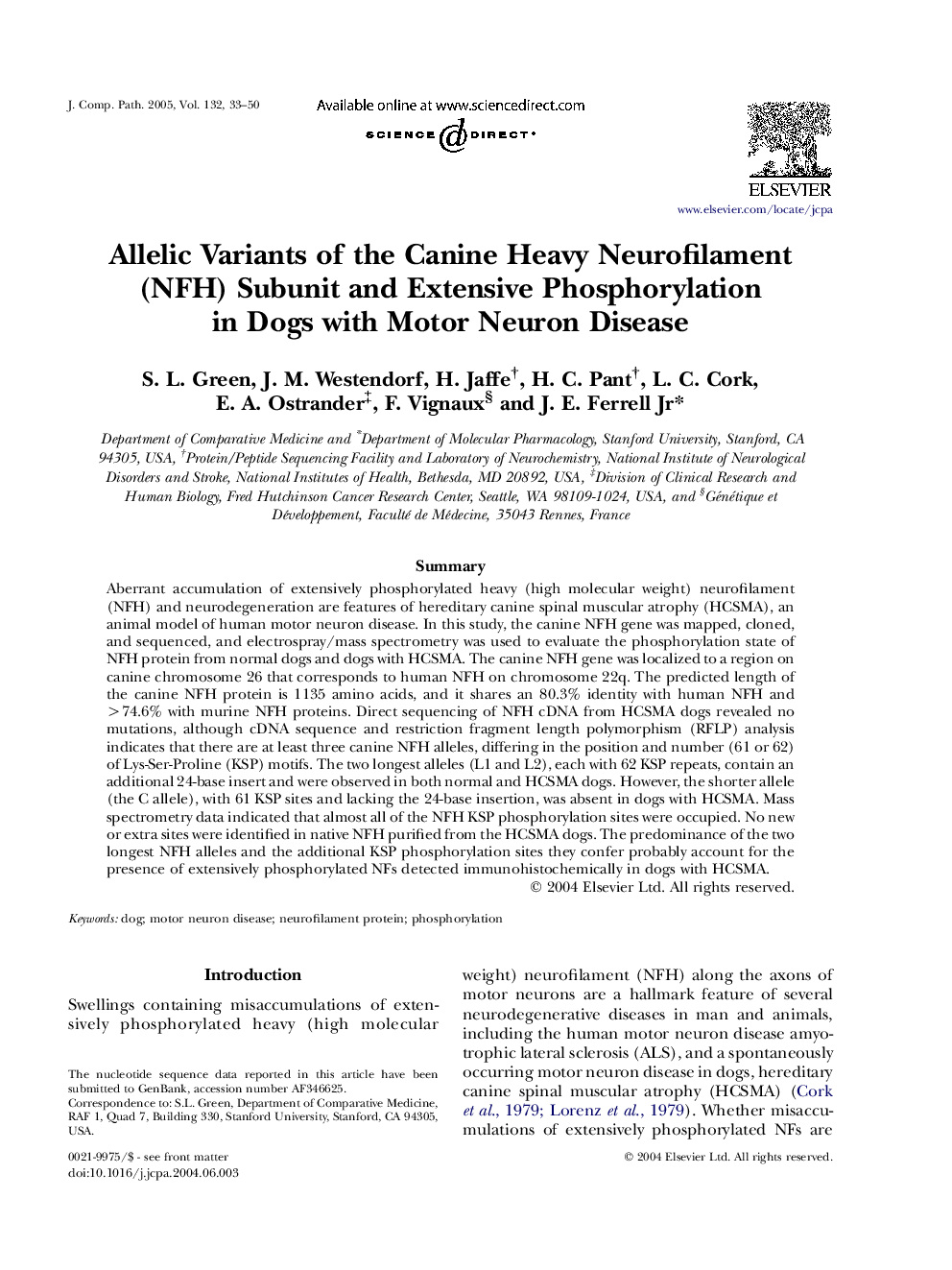| Article ID | Journal | Published Year | Pages | File Type |
|---|---|---|---|---|
| 8980746 | Journal of Comparative Pathology | 2005 | 18 Pages |
Abstract
Aberrant accumulation of extensively phosphorylated heavy (high molecular weight) neurofilament (NFH) and neurodegeneration are features of hereditary canine spinal muscular atrophy (HCSMA), an animal model of human motor neuron disease. In this study, the canine NFH gene was mapped, cloned, and sequenced, and electrospray/mass spectrometry was used to evaluate the phosphorylation state of NFH protein from normal dogs and dogs with HCSMA. The canine NFH gene was localized to a region on canine chromosome 26 that corresponds to human NFH on chromosome 22q. The predicted length of the canine NFH protein is 1135 amino acids, and it shares an 80.3% identity with human NFH and >74.6% with murine NFH proteins. Direct sequencing of NFH cDNA from HCSMA dogs revealed no mutations, although cDNA sequence and restriction fragment length polymorphism (RFLP) analysis indicates that there are at least three canine NFH alleles, differing in the position and number (61 or 62) of Lys-Ser-Proline (KSP) motifs. The two longest alleles (L1 and L2), each with 62 KSP repeats, contain an additional 24-base insert and were observed in both normal and HCSMA dogs. However, the shorter allele (the C allele), with 61 KSP sites and lacking the 24-base insertion, was absent in dogs with HCSMA. Mass spectrometry data indicated that almost all of the NFH KSP phosphorylation sites were occupied. No new or extra sites were identified in native NFH purified from the HCSMA dogs. The predominance of the two longest NFH alleles and the additional KSP phosphorylation sites they confer probably account for the presence of extensively phosphorylated NFs detected immunohistochemically in dogs with HCSMA.
Related Topics
Life Sciences
Agricultural and Biological Sciences
Animal Science and Zoology
Authors
S.L. Green, J.M. Westendorf, H. Jaffe, H.C. Pant, L.C. Cork, E.A. Ostrander, F. Vignaux, J.E. Jr,
